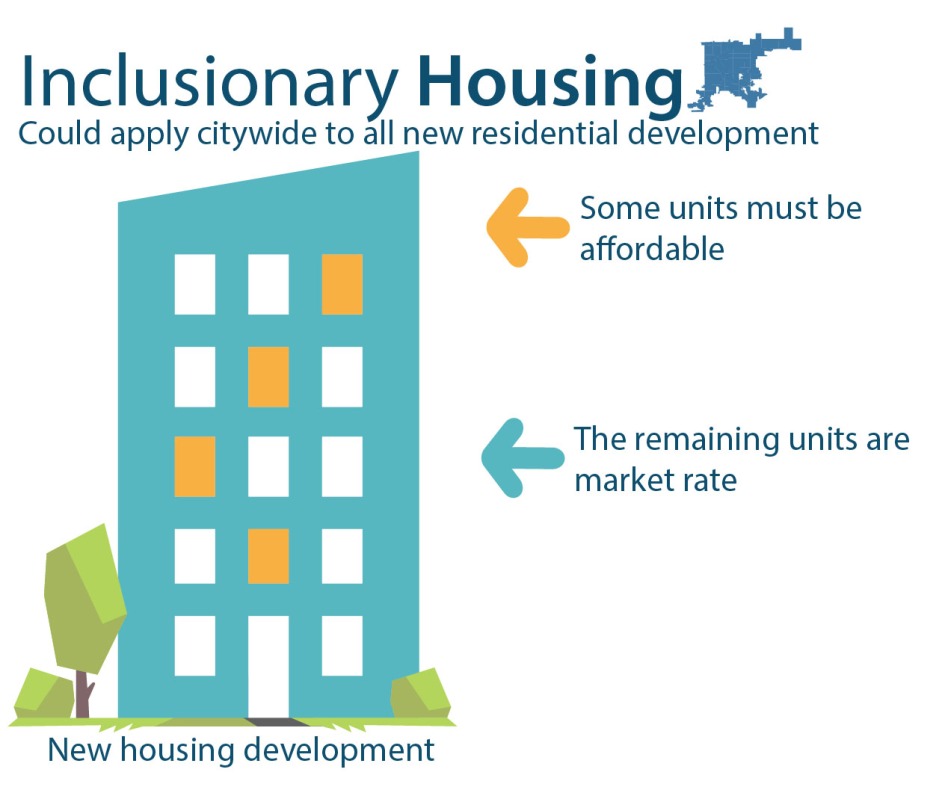Role of planning mechanisms in affordable housing delivery: Inclusionary zoning
Introduction
Planning mechanisms play a crucial role in the delivery of affordable housing, with land use regulation being strongly linked to housing supply and prices. For the past four decades, there has been a shift away from direct public housing provision towards a more diversified system where planning ensures sufficient affordable housing for low and moderate-income residents. This document will explore the role of planning mechanisms, with a focus on inclusionary zoning, a land use planning mechanism intended to create affordable housing and promote social inclusion. It will present a synopsis of the approach, analyze its controversies, and outline its benefits and challenges.

The Interplay Between Planning and Affordable Housing
The planning system is the first stage in housing delivery, and its regulatory role significantly impacts housing prices through zoning restrictions and development controls. Land use planning governs the availability of residential land, influencing the location, timing, and costs of new developments. Governments can impose affordable housing requirements on private developers using land use and planning regulations. Housing affordability is defined as the relationship between housing costs and a household’s total income, and it is deemed affordable when low and middle-income households spend a specified percentage of their income on housing costs. However, the effectiveness of different planning mechanisms varies across different market contexts.
Inclusionary Zoning: An Overview
Inclusionary zoning, also known as inclusionary housing, is a planning mechanism that aims to create affordable housing and foster social inclusion by leveraging market resources. It operates on the principle of implicit cross-subsidy, where developers of market-rate housing projects are required or incentivized to include a certain percentage of affordable units for low and moderate-income households. Some programs allow developers to build affordable units in other locations or contribute funds to support affordable housing development. These programs often offer incentives such as density bonuses or fee waivers.
The primary purpose of inclusionary zoning is to integrate affordable housing into broader community development, using market forces to stimulate affordable housing production. This approach aims to avoid segregation of affordable housing, create diverse housing options, and promote social integration and access to employment for low- and middle-income groups. Inclusionary zoning programs are typically enacted by local authorities and involve a combination of legal mandates and economic incentives17.
Evolution and Global Dissemination of Inclusionary Zoning
Inclusionary zoning originated in the early 1970s in Washington, USA, and has since become a major tool for affordable housing provision in many countries. It expanded to Western Europe and Canada during the 1990s, and more recently to countries in South Africa, Israel, India, New Zealand, and others. This expansion is due to factors such as rapidly increasing housing costs, reduced funding for social housing, and increased interest in promoting social integration. While widely implemented in the USA, England, and Canada, it is less common in developing countries, with exceptions in rapidly growing economies such as Malaysia, China, India, and South Africa.
Controversies Surrounding Inclusionary Zoning
Despite its increasing use, inclusionary zoning remains controversial, with critics challenging its efficacy. These controversies can be broadly categorised into those related to housing production and those related to social inclusion.
Arguments Related to Housing Production
- Market-Rate Housing: Critics argue that inclusionary zoning acts as a development tax, potentially leading to lower housing production, increased prices, and slower development25…. They suggest that the burden of affordable housing requirements is passed on to consumers and landowners, driving away private developers27…. However, evidence contradicts these arguments, showing that inclusionary zoning does not impair development, and that development pace is influenced by larger market forces. Studies indicate that program design and incentives can secure developers’ profits26. Housing prices are determined by market demand rather than development costs.
- Affordable Housing: Some argue that inclusionary zoning is not effective at providing affordable housing and might even exacerbate shortages by causing developers to raise market-rate housing prices. However, research indicates that inclusionary zoning, when well-structured and implemented, can produce significant amounts of affordable housing without the need for public subsidy. It can double the total affordable housing production. Case studies from various countries, including the USA, Canada, the UK, and Italy, demonstrate the viability of inclusionary housing as a tool to address global affordable housing needs.
Arguments Related to Social Inclusion
- Critics argue that inclusionary zoning is ineffective at achieving social integration, especially when alternatives to on-site construction are applied. In contrast, proponents argue that inclusionary zoning inherently achieves socio-economic integration goals, providing low- and moderate-income households with access to better neighbourhoods. It also mitigates exclusionary zoning practices.
- Some critics also note that inclusionary zoning programs may not serve the lowest-income households. However, programs can include provisions that allow local public housing authorities to purchase and operate some inclusionary zoning homes for lowest-income renters.
Challenges and Validation of Inclusionary Zoning
Despite its benefits, inclusionary zoning faces several challenges. A primary limitation is that the creation of affordable units depends on the policy requirements and local housing market conditions. Other challenges include possible public funding requirements, regulatory barriers, developer opposition, and community acceptance. However, its accomplishments and benefits outweigh these challenges.
Inclusionary zoning is a market-based remedy to social exclusion in residential development.
It can ensure equitable access to resources and promote sustainable urban environments, as well as strengthen communities and stimulate economic development.
Conclusion
Inclusionary zoning is a valuable tool for increasing the affordable housing stock and fostering social inclusion, though it should be implemented carefully. It can be a suitable approach for strong housing markets seeking social equity and economic balance. Successful application requires a comprehensive housing strategy, consideration of latent challenges, and implementation in strong and mature housing markets.
For further reading:
Role of planning mechanisms in affordable housing delivery …
